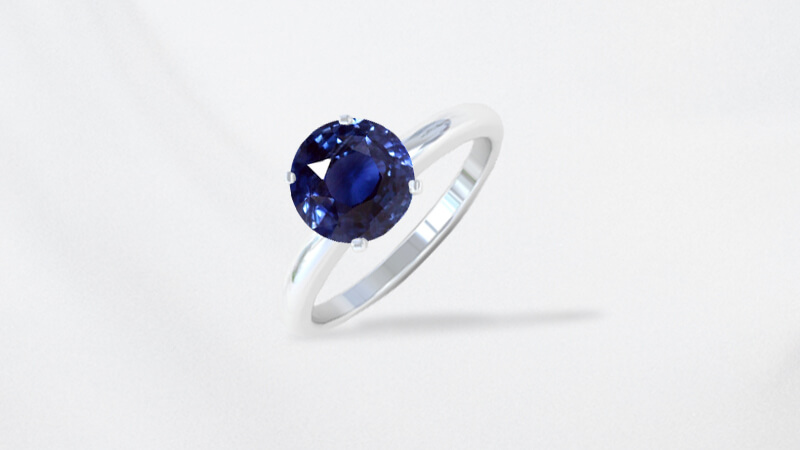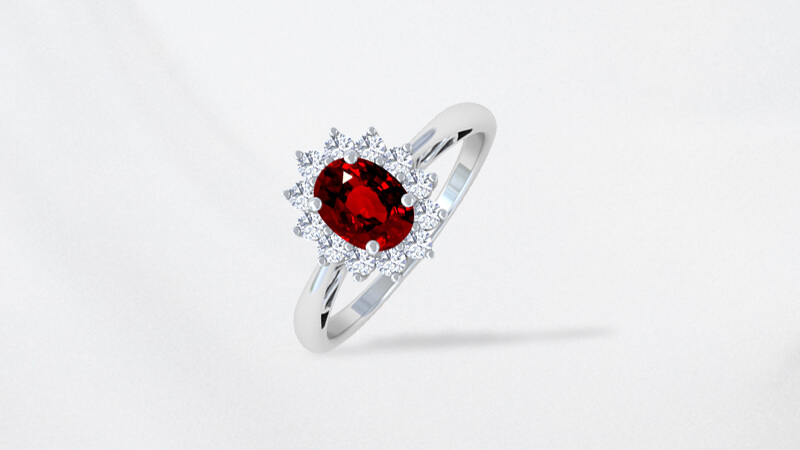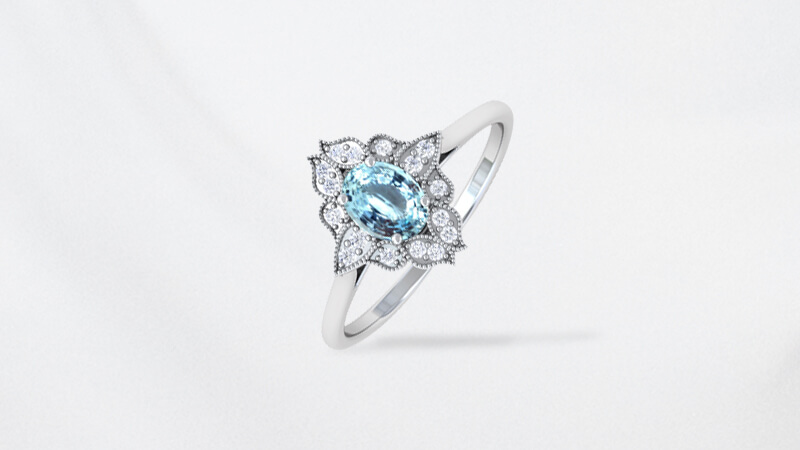‘If you like it, you should put a ring on it’ and begin the wonderful journey of sharing your lives together. There are many things that go into creating the perfect ring. The ring setting may sound underwhelming but choosing the right setting is just as important as choosing the gemstone. We wanted to make sure that you don’t miss out on the good stuff so we compiled a list of the best ring settings to help you create the best engagement ring for you.
Solitaire
Solitaire setting has retained its place as one of the most popular ring settings since time immemorial. In a solitaire setting, a single gemstone is held in place by prongs. Since the stone is not engulfed by metal on all sides, light can pass through it with ease. The simplicity of this style is truly endearing. Further, the setting elevates the stone, placing it in the limelight. No wonder it’s the most popular engagement ring setting.
Halo
Gemstones are placed along the periphery of the center stone in a Halo setting. If the center stone is round cut, they can be layered in concentric circles but if it is an emerald cut center stone for instance, the peripheral stones will naturally follow the rectangular outline of the emerald cut center stone. Surrounding the center stone with different gemstones can give your ring a subtle floral appearance. On the other hand, picking the same gem as the center stone can make the rock appear bigger than it really is. Since the smaller rocks weigh less halo rings also help you save money on carat weight
Two stone
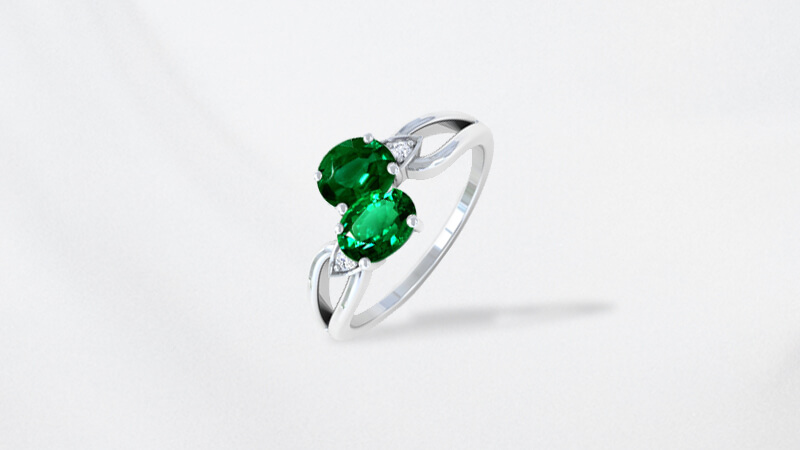
You can get the best of both worlds with a Two-stone setting. Can’t decide between a white diamond and a yellow sapphire? You don’t have to. A two-stone ring is the best place to experiment. This of course is entirely a matter of opinion. You can keep it simple with the gemstones and experiment elsewhere. For instance, while the two stones are usually the same size and cut, there is no rulebook when it comes to designing.
Antique
The antique ring setting is very versatile. It encapsulates designs from specific periods of jewelry fashion, such as Belle Époque, Art Deco, Retro, Edwardian, and Victorian eras. These rings are often embellished with different types of intricate handiwork. Filigree is one such type in which the craftsmen create tiny beads or twisted threads of metal on the surface of the ring. While Filigree gives the appearance of being superimposed, another type of handiwork called Mil grain consists of tiny bead-like impressions on the metal. These designs are very important
Celtic

The Celtic ring setting comes from the Claddagh rings. They were first seen over 300 years ago in the Irish fishing village called the Claddagh, which is an Irish term meaning “flat stony shore.” Traditionally Celtic rings have three elements. 1. A heart. 2. A crown on top of the heart. 3. Two hands holding the Heart. The 3 represent love, loyalty, and friendship. Modern variations often mimic the aforementioned motifs with subtle designs.
Bar
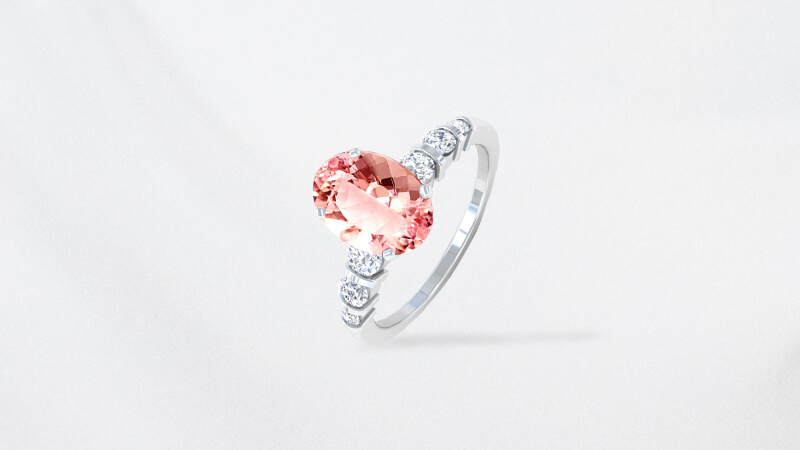
In a bar setting, the gemstones are set horizontally along the front of the shank. They are separated by vertical metal bars on either side of each gemstone. The stones are very well exposed in a bar setting. This intensifies their sparkle. The metal bars have a stronghold over the gemstones which means they are set securely in the ring. Rings with bar settings can be easily stacked with other rings.
Split shank
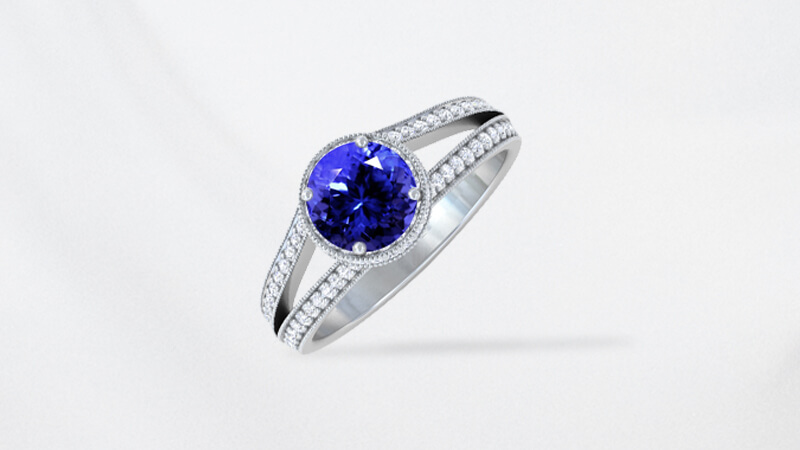
The shank is the band that encircles the finger. As the name very clearly suggests, in a split shank the aforementioned band is split into two separate bands which may or may not intertwine at some point. The design options for split shanks are virtually inexhaustible. This setting is not only immensely attractive, but it also draws attention to the center stone because of the unique setting in which it has been placed.
Flush
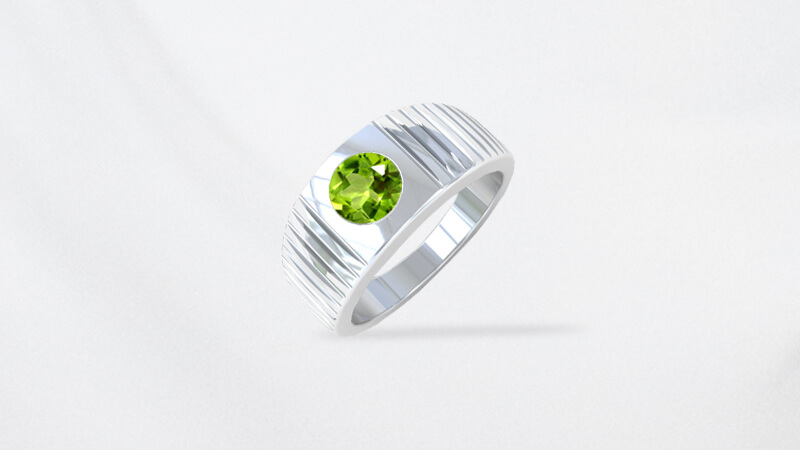
In a flush setting, the center stone is set in a hole drilled within the band. This way, the stone does not protrude over the rest of the ring, rather, it sits “flush” (at the same level) with the band. The metal is hammered around the stone to hold it in place. While this setting holds the gemstones in a secure grip, only a hard gem can sustain the process of being set in the band. This setting is a popular choice for men’s engagement rings.
Now let’s get you married!
